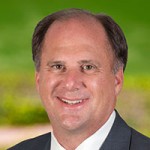As a part of our talent acquisition engagements, we ask our clients how they define “top talent” and how they would assess those traits in the interview process. Reflecting on the insightful comments we hear every day, we thought there would be great value in a new blog in which senior executives/thought leaders share their “Take on Talent.”
This is the fifth in a series of blogs/interviews with senior executives who are thought leaders in the areas of Talent Acquisition, Career Development and Leadership who will share their perspectives on this ever present question.

Robert (Bob) D. Pryor is head of Americas and corporate vice president of Fujitsu Limited. He oversees the performance of Fujitsu businesses in Canada, United States, Caribbean, Mexico, and Central and South America. His extensive business knowledge and global insight helps Fujitsu achieve its ambitious goals to use technology to improve business and society.
Bob joined Fujitsu Americas in 2013, building on a long career in the IT industry. He has specific expertise in global operations, sales, customer management and complex infrastructures. This knowledge is critical for his role as head of the Americas, particularly as the Fujitsu business in the Americas is focused on integrated business solutions in addition to IT hardware.
Please share with us the top five characteristics (in priority order, first to fifth) of the most talented people you have encountered during your career, and your definition of each. The following are examples, please add or modify as you see fit.
I don’t have a specific priority list, but key attributes I look for are: passion, energy, intellectual capacity, curiosity, determination (e.g., you ‘love to win’ or ‘hate to lose’), coach-ability (able to embrace constructive criticism and apply it quickly to drive continuous improvement) and humility (sacrifice self-interests and put others first, especially clients and teammates). I really value people who have taken great professional risks in their careers—especially people who have failed and successfully applied those painful lessons to their future endeavors. I am generally underwhelmed when people try to hide their failures or weaknesses and disguise them as strengths. I’m far more inspired by those that fail publicly and spectacularly yet find a way to generate amazing insights, life lessons and successes on the heels of adversity.
How do you communicate these characteristics to your HR and senior management team?
I strongly believe in setting very clear expectations and priorities and holding people accountable for their objectives and responsibilities. As part of this expectation-setting, I am clear about the kinds of mistakes I will not accept (including those related to breaches in our code of conduct and ethics, or violations of trust) as well as specific expectations for an individual and his or her team. I also provide required reading to use as discussion points, and I reinforce those messages with periodic communications, story-telling, performance reviews and informal coaching sessions.
How do you handle challenges to the existing culture by talent you have brought in?
This is a hard one. Generally, corporate culture can be viewed in two ways: culture that is not subject to debate or change (e.g., a passion for innovation, company heritage, and the like) and culture that is rooted in historical behaviors and attitudes. It’s really important to separate the two. Companies often have people who are steeped in historical practices – outdated views, inefficient ways of working and a glorification of the good old days – all of which are characterized as cultural absolutes. While this challenge isn’t ideal for any company, it can be a serious liability in the tech industry, where a person’s ability to change with the times isn’t enough. We need change ahead of the times, anticipate the curve and innovate for our customers before everyone else. When I bring on new talent, I am keenly focused on what we are trying to achieve in the future and then hire to support the skills, attitudes and behaviors that pave the way to that future. The more skilled, forward-looking, positive, agile and team-oriented people we have, the more likely we are to inspire others to join us. There will always be some that are set in their ways or resistant to change. To mitigate that, we continuously assess our management practices, people programs and annual employee engagement survey scores to ensure we are creating an exciting place for the next generation of employees to join and build their careers.




